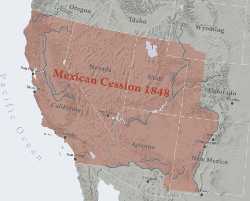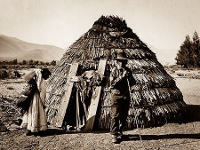The Making of the 50 States: Nevada
Part 1: In the Beginning
European exploration of the area was in the form of Spanish representatives at first. Francisco Garces was first on the scene. Others followed, and Spain claimed Nevada and much of the surrounding area, calling it New Spain. In 1804, Nevada became part of Alta California, which became a Mexican territory after Mexico's independence from Spain, in 1821. The first permanent non-Native American settlement was Mormon Station, in what is now Genoa, founded in 1815 by members of the Mormon faith. American explorer Jedediah Smith and Peter Skene Ogden, of Great Britain's Hudson's Bay Company, rolled through the area in the 1820s, exploring the Muddy River and the Snake River, respectively. (Ogden also traveled the Humbdoldt River.) Other explorers, including Kit Carson, John C. Fremont, and Joseph Walker followed. Other travelers, heading west along the California Trail and Mormon Trail, followed as well. 
Nevada was part of the Mexican Cession, the transfer of a large amount of land from Mexico to the United States after the end of the Mexican-American War. That was in 1848, the same year in which gold was discovered in California, triggering the Gold Rush. Thousands of treasure-seekers passed through Nevada on their way to what they hoped was a dream come true. Gold was discovered in Nevada, near Dalton, in 1851. Next page > The Rest of the Story > Page 1, 2
|
|
Social Studies for Kids
copyright 2002–2026
David White



 Among the Native American tribes in what is now Nevada were the Goshute, Ioway, Kansa, Koso, Mojave, Omaha, Paiute, Panamint, Ponca, Shoshoni, Ute, Walapi, and Washoe. Among the housing they had was the wikiup, a dome-shaped hut made of brushwood and covered with mats.
Among the Native American tribes in what is now Nevada were the Goshute, Ioway, Kansa, Koso, Mojave, Omaha, Paiute, Panamint, Ponca, Shoshoni, Ute, Walapi, and Washoe. Among the housing they had was the wikiup, a dome-shaped hut made of brushwood and covered with mats.
